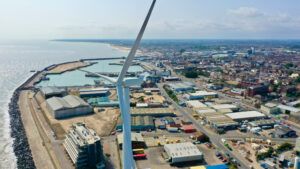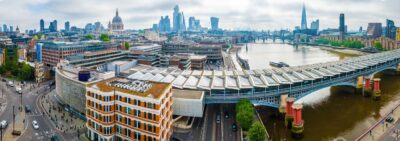The United Kingdom’s energy sector’s mindset, forged by scarcity and high costs, has become its greatest strategic advantage. Driven by high costs from declining domestic reserves and a reliance on imports, efficiency became a critical financial necessity.
Strong policy commitments to a low-carbon future cemented this direction, creating a world-class model for valuing energy. This approach offers valuable lessons for any organization. In this article, we’ll explore the key strategies you can adapt to cut operational costs, enhance grid resilience, and unlock new revenue streams.
Proactive Power Generation
United States buildings are typically passive energy consumers. In contrast, UK commercial properties are designed as active grid participants. They leverage smart systems to automatically reduce energy use during peak demand periods (Demand Response), generating significant financial incentives.
Furthermore, the strategic adoption of on-site power is pursued to maximize self-consumption and sell excess power back to the grid. This is exemplified by the widespread use of commercial solar panels in the UK, which creates a new revenue stream while enhancing grid resilience.
Community-Scale Energy Generation
US builders often focus on single-building solutions. The UK, however, excels at district energy systems. These networks use a central energy center for power generation, often powered by Combined Heat and Power (CHP) technology, to provide space heating and cooling to multiple commercial buildings via underground pipes.
This approach to energy production avoids the waste of generating electric power off-site in separate power plants while capturing and using the “free” heat that is normally vented. Developers benefit from lower greenhouse gas emissions, reduced upfront capital costs, and significantly lower, more stable energy operational costs for tenants.
Stringent Building Regulations
The UK’s national Part L building regulations present a stringent alternative to the state-specific codes common in the US. They adhere to a “Fabric First” philosophy of optimizing the building envelope by super-insulating walls, roofs, and floors. They install triple-glazed, airtight windows and eliminate draughts through meticulous sealing.
Eliminating waste at the source in this manner drastically reduces energy needs, ultimately creating inherently efficient, resilient, and comfortable buildings with superior energy savings. In essence, true sustainability is built in, not bolted on.
Ambitious Retrofit and Refurbishment Culture
The UK’s extensive older building stock has fostered a specialized industry in deep energy retrofit. Technology and strategic upgrades drastically lower demand for heating and cooling.
For instance, integrating mechanical ventilation with heat recovery (MVHR) systems ensures fresh air without losing valuable warmth. Old gas boilers can be replaced with air- or ground-source heat pumps, and energy needs can be supplemented with solar photovoltaic panels and solar thermal water heating.
These measures transform outdated properties into high-performance assets. They safeguard them against volatile energy prices and boost their market value, a transformation often guided by energy consultancy firms.
Diversified and Decentralized Energy Mix
The UK’s strategic pivot involves diversifying away from a dependence on imported fossil fuels like natural gas. This enhances national energy security and mitigates price volatility, catalyzing innovation across the renewable energy business sector.
The high potential for wind energy, both onshore and offshore, is being aggressively tapped, providing clean services from wind energy at a national scale. Beyond wind, the strategy includes leveraging the UK’s geography for river hydropower plants and hydro-electric power, alongside investing in newer technologies like biogas power generation from organic waste.

Holistic Energy Optimization Across All Sectors
The UK’s approach extends beyond commercial development to encompass all building types. This recognizes that significant gains lie in tackling residential energy use and the operation of public buildings.
A key strategy is to move away from individual gas fuel boilers in homes and towards integrated district heating and cooling systems for urban areas. This is supported by a growing workforce of specialists, from the solar panel installer optimizing solar energy applications on rooftops to engineers developing scale biofuel production.
Even granular upgrades (like retrofitting public libraries and schools with high-efficiency lighting fixtures) contribute to the national goal of energy conservation, proving that every watt saved enhances overall energy security.
Translating the Lessons for US Builders
Adopting UK strategies requires adaptation, not replication. US builders can act now by championing a “Fabric First” design ethos to minimize energy demands from the start. They can also advocate for energy policies that provide long-term stability for green investment, engaging with the Department of Energy and local legislators.
On larger projects, propose feasibility studies for district systems. Integrate smart, grid-responsive technologies into building management systems. This shifts the mindset from mere compliance to viewing energy efficiency as a fundamental driver of a property’s resilience, profitability, and long-term market value, moving beyond a focus on non-commercial energy use to optimize industrial energy use and institutional energy use.












